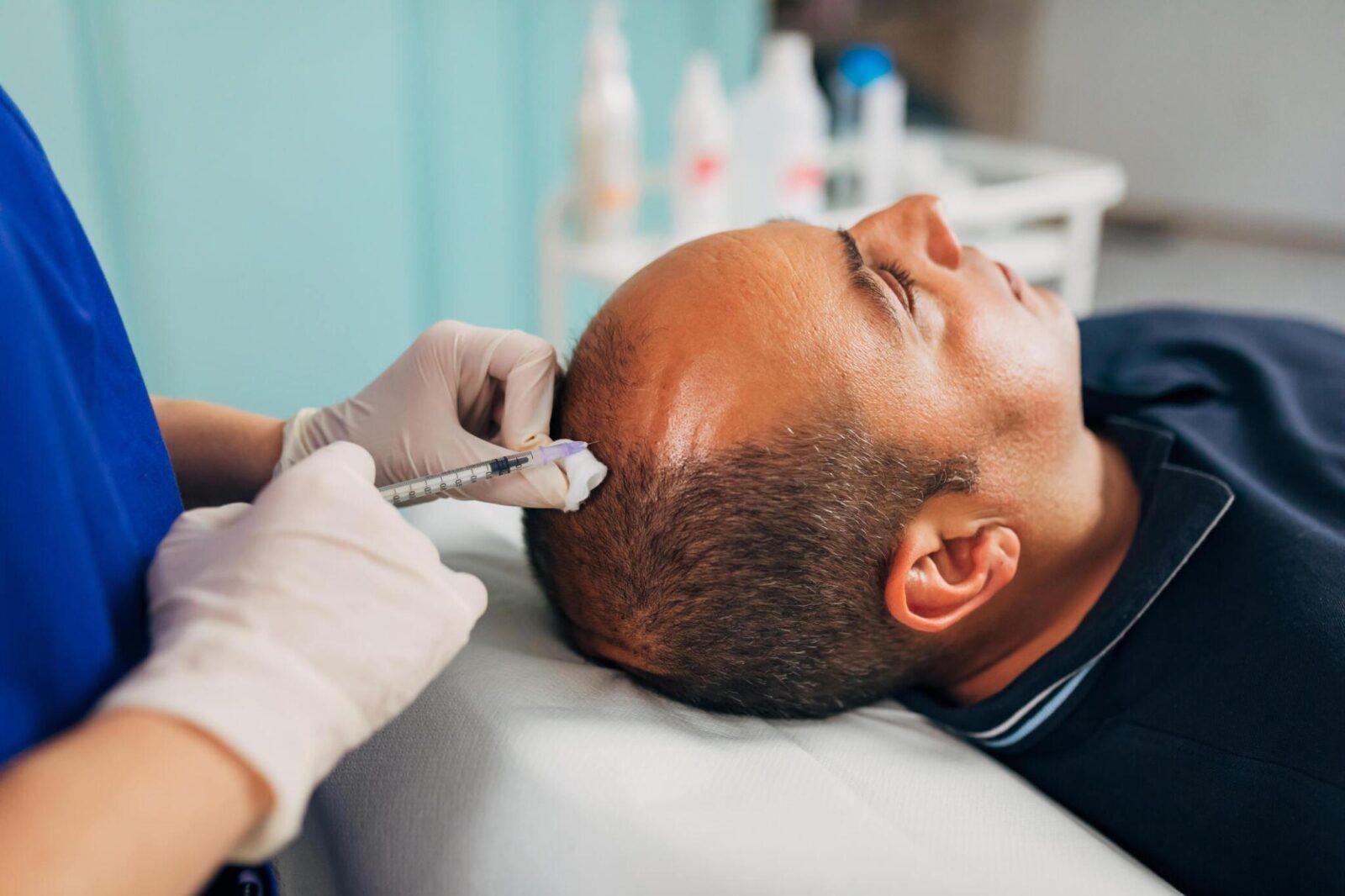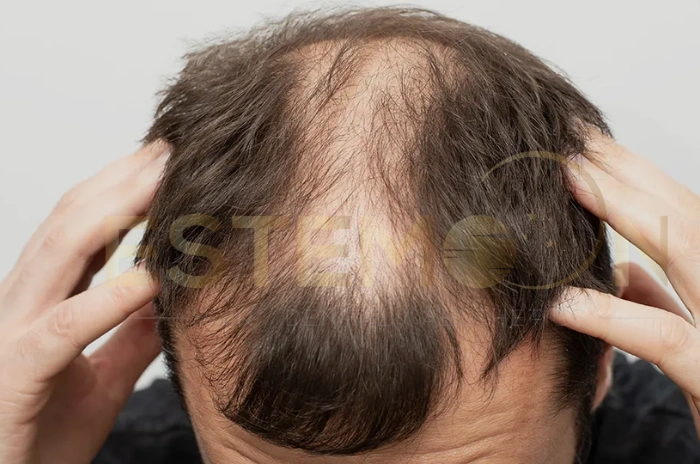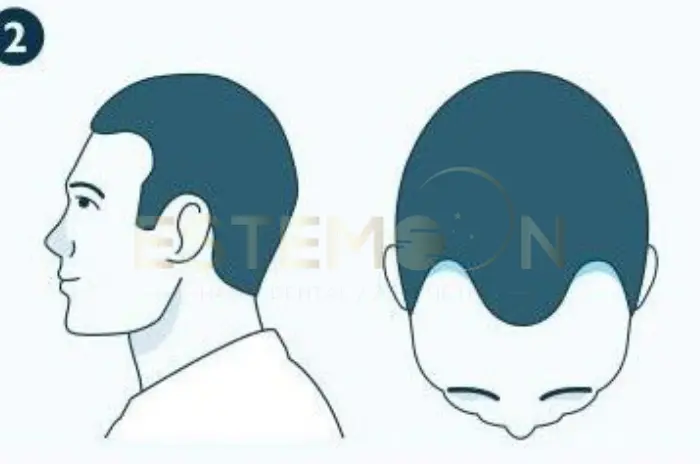In the field of hair restoration, Estemoon has established itself as a prominent global hub, known for its state-of-the-art facilities and innovative technologies. Esteemed for its contributions to the thriving medical tourism sector, Estemoon has become a leading choice for individuals seeking advanced and effective hair transplant solutions. In this comprehensive guide, we explore the realm of hair restoration, shedding light on the best transplant methods offered by Estemoon and the reasons behind its emergence as a preferred destination for those seeking a permanent remedy for hair loss.
Understanding Hair Transplantation: Before delving into the details of the finest hair transplant methods, it is crucial to comprehend the fundamentals of hair transplantation. This procedure involves the extraction of hair follicles from a donor site, typically the back or sides of the scalp, and their implantation into the recipient area where hair is thinning or lost. Estemoon specializes in providing natural-looking results with minimal scarring and downtime.
Follicular Unit Transplantation (FUT):
An innovative technique in hair restoration, FUT entails harvesting a strip of scalp from the donor area and then dissecting it into individual follicular units. Estemoon has perfected this method, ensuring precision and expertise throughout the procedure. FUT is ideal for patients requiring a substantial number of grafts, boasting high success rates.
Follicular Unit Extraction (FUE):
FUE Hair Transplant has gained widespread popularity for its minimally invasive approach. Esteemed surgeons at Estemoon meticulously extract individual follicular units using a specialized punch tool, leaving tiny, virtually undetectable scars. This method is suitable for those seeking a faster recovery and reduced postoperative discomfort.
Direct Hair Implantation (DHI):
Estemoon takes innovation to the next level with the Direct Hair Implantation technique. DHI Transplant involves extracting, sorting, and implanting grafts in a single session, minimizing the time the follicles spend outside the body. This approach results in higher graft survival rates and ensures a seamless, natural-looking outcome.
Why Choose Estemoon?
Expertise and Accreditation:
Estemoon boasts a team of highly skilled and experienced hair transplant specialists. The clinic holds accreditation from international medical boards, ensuring that patients receive top-notch care and adhere to global medical standards.
Cutting-Edge Technology:
Staying at the forefront of advancements in hair restoration technology, Estemoon invests in the latest tools and equipment. From high-tech surgical instruments to advanced imaging systems, the clinic employs the best available resources to deliver optimal results.
Personalized Treatment Plans:
Recognizing that every individual’s hair loss situation is unique, Estemoon tailors personalized treatment plans for each patient. Whether opting for FUT, FUE, or DHI, the clinic ensures that the chosen method aligns with the patient’s specific needs and expectations.
Revitalize Your Hair:
Choose Excellence with Estemoon Today! In the vibrant city of Estemoon, the clinic emerges as a beacon of hope for those seeking the best hair transplant methods. With a commitment to excellence, cutting-edge technology, and a team of dedicated professionals, Estemoon stands at the forefront of the global hair restoration landscape. Choosing Estemoon means not just regaining lost hair but also gaining confidence and a renewed sense of self. Embark on the transformative journey of hair restoration with Estemoon, where expertise meets innovation for unparalleled results.
Advantages of Hair Transplant in Istanbul, Turkey
Turkey is a well-known country for hair transplant. Every year thousands of people come to Turkey for hair transplant. Thanks to talented doctor, great hospital and experienced teams Turkey has amazing hair transplant results. There is a lot of Hospitals or clinics in Turkey that can give you your desired look. You can gain a better appearance, high self-confidence etc. Let’s look the advantage of hair transplant in Turkey.
Why do people get hair transplants in Turkey?
If you are thinking to get hair transplant there are several options for you. Even though you can get hair transplant surgery in your country, nowadays hair transplant in Turkey is very popular. In this article we will tell why you have to do hair transplant in Turkey and what is opportunities of hair transplant in Turkey.
If you’ve been thinking about hair transplantation and not sure if the treatment given in your country fits your needings then traveling abroad will be the best to consider. Hair transplants abroad have become ever more popular in recent years. Traveling for hair transplant gives you the opportunity to choose from fantastic locations where you can both get your treatment and explore new places.
- Hair Transplant in Turkey is Very Affordable
Turkey is the best country for hair transplant and it is cheaper than your country. Hair transplant price in Turkey is more than %70 cheaper than your country. This mean you come to Turkey, you stay in the hotel, you do some shopping, you travel in Turkey and it is still cheaper. You can get a best hair transplant with all inclusive packages with best prices. This is amazing.
- Turkey is the best country for Hair Transplant procedure
Turkey is the best place for hair transplant for patients from Europe, Middle East, America, Asia or Africa. More than 25,000 patients come to Turkey for hair transplant.
As we say Turkey is the best place for hair transplant because has an amazing experience on hair transplant. Also, we have amazing doctors, nurses and hospitals. This experience of hair transplant brings more patients to Turkey. You can find the latest hair transplant technology, latest techniques in Turkey.
Age Considerations for Hair Transplant
Younger Patients (Under 25)
For younger individuals experiencing hair loss, it’s essential to evaluate the stability of hair loss patterns. Hair transplant surgeons typically advise against surgery at very young ages due to the unpredictable nature of hair loss progression. Waiting until the mid-twenties allows for a better understanding of future hair loss patterns.
Middle-Aged Patients (25-40)
This age group often benefits the most from hair transplants. By this time, the pattern of hair loss is usually more evident, and the stability of donor areas can be assessed accurately. Hair transplants during this period can provide natural-looking and long-lasting results.
Older Patients (Over 40)
While hair transplants are still feasible for older individuals, the extent of coverage and density achievable may vary. Additionally, underlying health conditions should be considered. Nevertheless, advancements in hair restoration techniques make it possible for many older individuals to achieve successful outcomes.
Key Factors Influencing Age Choices
- Hair Loss Progression: Understanding how hair loss is likely to progress is crucial.
- Health Status: Ensure you’re in good overall health before undergoing any surgical procedure.
- Expectations: Realistic expectations about the outcomes of the procedure are essential.
What is the Best Age for Hair Transplant?
Determining the best age for a hair transplant requires careful consideration of individual factors. Consulting with a qualified hair transplant specialist is the first step towards making an informed decision. Remember, the goal of a hair transplant is to achieve natural-looking results that boost your confidence and improve your quality of life.
Pre-Procedure for Hair Transplant: Local Anesthesia
To minimize pain, the procedure begins with administering local anesthesia to the donor and recipient areas. Patients may feel slight discomfort or a pinch during this process, similar to the sensation of receiving a dental injection. Once the anesthesia takes effect, the treated areas become numb, and the patient should not feel pain during the extraction and transplantation of hair follicles.
During the Procedure
Throughout the procedure, patients are typically awake and can communicate with the surgical team. Some clinics offer options for watching TV or listening to music to keep patients relaxed. Most patients report feeling only minor pressure or a tugging sensation as the follicles are extracted and implanted, but not actual pain.
Post-Procedure: Pain Management and Recovery
After the procedure, it is normal to experience some tenderness, swelling, and mild discomfort in both the donor and recipient areas. Your surgeon will prescribe pain medication to manage any discomfort during the initial recovery period. Most patients find that over-the-counter pain relievers are sufficient to alleviate any post-operative pain.
Factors Influencing Pain Perception
Pain perception varies from person to person, influenced by individual pain thresholds, the extent of the transplant, and the surgeon’s technique. Choosing an experienced and skilled surgeon can significantly reduce the risk of pain and complications.
Tips for a Comfortable Recovery
- Follow Post-Op Instructions: Adhere to all post-operative care instructions provided by your surgeon to minimize discomfort and promote healing.
- Stay Hydrated: Drink plenty of water to aid the body’s natural healing process.
- Rest and Avoid Strenuous Activities: Allow your body time to recover by avoiding heavy lifting and strenuous exercise for the first few days.
- Use Cold Compresses: Applying cold compresses to the forehead can help reduce swelling and discomfort.
Why Are Hair Transplant Touch-Up Sessions Necessary?
While the initial hair transplant procedure lays the foundation for hair restoration, touch-up sessions are often needed to refine and perfect the results. There are several reasons why touch-up sessions might be necessary:
- Density Enhancement: The initial transplant may not achieve the desired density, and a touch-up session can help fill in any sparse areas.
- Natural Appearance: Touch-ups can ensure a more natural hairline and overall appearance by adjusting the placement and angle of the transplanted hair.
- Addressing Unpredictable Growth: Not all transplanted follicles may take root as expected. A touch-up can address any areas where hair growth was less successful.
- Correcting Grafts: Occasionally, some grafts may not grow as anticipated or may need repositioning to achieve a more aesthetically pleasing result.
Benefits of Touch-Up Sessions
- Improved Results: Achieve a fuller, more natural look that complements your overall appearance.
- Enhanced Confidence: Feel more confident with your hair restoration results, knowing that any imperfections have been addressed.
- Long-Term Satisfaction: Touch-up sessions help ensure long-term satisfaction with your hair transplant by refining and perfecting the outcome.
Long-Term Recovery and Growth (Months 2-12+)
As you progress into the long-term recovery phase, you’ll begin to notice significant improvements in hair density and appearance. Keep the following in mind:
- Follow-Up Visits: Attend scheduled follow-up appointments with your surgeon for progress tracking and guidance.
- Styling and Maintenance: Start styling your hair as desired and consider treatments such as coloring or styling products, following your surgeon’s advice.
- Patience for Full Results: Realize that although visible improvements are noticeable within months, complete results may take a year or longer as transplanted hairs thicken and mature.
Successfully navigating the hair transplant healing stages requires patience, adherence to post-operative care instructions, and regular communication with your surgeon. By following these guidelines and understanding what to expect at each stage, you can achieve optimal results and enjoy the natural-looking, healthy hair you desire.




